Marketing Discovery: 10 Steps to Build a Profitable Digital Marketing Strategy


10 Steps to Build a Profitable Digital Marketing Strategy
Table of Contents
Serious about growing your business? Let’s plan exactly how to get you more leads, sales, and results—faster.
Most businesses don’t fail because of bad products; they fail because of unclear marketing.
They run ads, launch campaigns, and post endlessly across social media, yet results remain inconsistent.
Real growth starts when you stop guessing and align every marketing move with your business goals.
That’s where Marketing Discovery comes in: the process of connecting your audience, message, and channels into one powerful digital marketing strategy that drives consistent sales.
At Credofy, we’ve seen this clarity transform businesses across industries:
A UK property investment firm doubled ROI in just six months while reducing ad spend by 44%.
A London-based artificial grass company grew from £6,600/month to £136,000/month, crossing £1.5 million in a year. Even during COVID, their online revenue scaled 20x, powered by data-backed online marketing and a customer-first approach.
Marketing isn’t just about ads, SEO, or social media marketing.
It’s about how your business creates, communicates, and delivers value through every touchpoint, from your website to your content, your campaigns, and even your follow-ups.
Get it wrong, and you’ll waste money testing random ideas.
Get it right, and every campaign compounds growth.
In this guide, we’ll walk through the 10 essential steps to build a profitable online marketing strategy, one designed to scale sustainably, improve lead generation, and drive predictable business growth.
Digital Marketing, SEO & PPC
- SEO to boost rankings and capture high-intent, AI-driven traffic
- Performance Marketing to run ROI-focused campaigns that convert
- Content Marketing to drive clicks, earn links, and build authority

Why Businesses Fail at Growth
Marketing isn’t just promotion; it’s the system that powers visibility, trust, and sales.
It’s how businesses connect with their target market, understand customer needs, and deliver value through the right marketing channels.
- Reach qualified leads through targeted digital and B2B marketing efforts.
- Build trust and authority across your customer journey, using authentic content marketing and storytelling.
- Turn visibility into consistent revenue through optimised marketing communications, SEO marketing, and funnel strategy.
Without clarity, most brands fall into the trap of chasing digital marketing trends, running random PPC campaigns, copying competitors’ social media marketing strategy, or overspending on online advertising that doesn’t convert.
A well-defined marketing plan transforms chaos into clarity.
It ensures every campaign has purpose, every platform serves a measurable goal, and every pound or dollar spent fuels growth.
Whether you’re designing a brand strategy, refining your market segmentation, or creating a scalable omnichannel marketing approach, the core principles remain the same: align your message, audience, and offer.
That’s the real role of marketing: not just to promote, but to propel your business toward sustainable, profitable growth through strategy-driven execution.
The 3 Golden W’s (From the DRS Framework)
1. Business & Marketing Alignment
Before you run another ad or plan your next campaign, take a step back and ask:
Are your business goals and marketing strategy actually aligned?
Because here’s the reality, marketing rarely fails because of bad ads; it fails because it’s disconnected from business fundamentals.
You can have the best PPC marketing setup, creative social media posts, or even high website traffic, but if your core business model, pricing, and sales process aren’t ready to support growth, you’ll just keep burning money.
- If your sales team can’t manage new leads, increasing ad spend won’t help.
- If your pricing strategy doesn’t match your audience’s expectations, better traffic won’t fix it.
- And if your product-market fit isn’t clear, even the best digital marketing agency can’t save the campaign.
That’s why business and marketing alignment is the foundation of every successful online marketing plan.
It’s where you decide what really matters right now, is your focus on building brand awareness, generating qualified leads, or improving customer retention?
Once you have that clarity, everything else falls into place.
You can set meaningful KPIs, like ROI, Customer Acquisition Cost (CAC), referral growth, or revenue targets, and build your campaigns around them.
That’s how marketing starts working for your business, not against it.
When your marketing communications are synced with your business model, every ad, blog, and email starts compounding results.
Instead of chasing clicks, you start tracking conversions that actually matter: sales, sign-ups, renewals, and referrals.
At Credofy, we’ve seen this approach turn struggling campaigns into growth engines.
One client, a property investment firm, doubled their ROI in six months simply by aligning their sales process with their marketing funnel.
That’s the power of alignment:
It transforms your marketing from random activity into a growth system that compounds results month after month.
Recommend Read: 30 Best Tips for Email Marketing to Increase Conversions in 2025
Marketing Research & Strategy
We help you understand your market and build smart strategies to attract more customers and grow faster.
- Detailed research into your competitors, customers, and market
- Custom marketing and growth plans that drive real results
- Clear action steps to increase traffic, leads, and sales
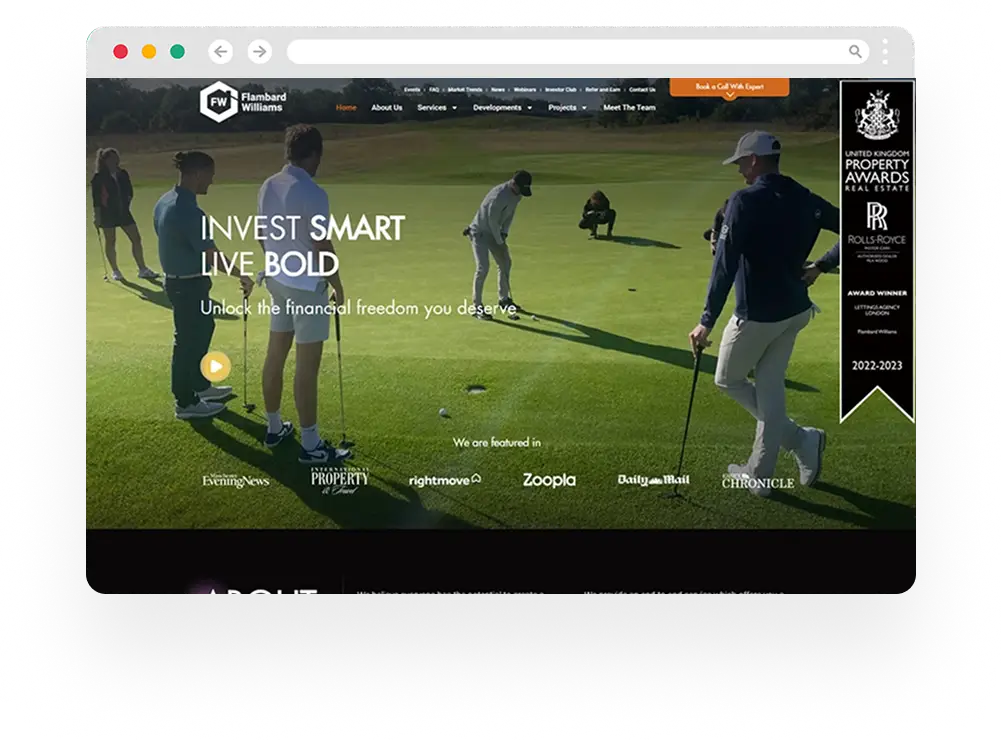
ADWORDS ROI
Cut Ad spend
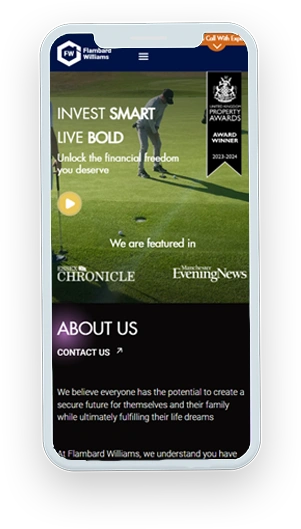
2. Audience & Buyer Journey Mapping
Once your business and marketing goals are aligned, the next step is to understand who your audience is, and how they buy.
You can’t market effectively to people you don’t fully understand.
That’s why buyer journey mapping is essential for any successful digital marketing strategy. It shows you where your audience discovers you, what drives their decisions, and where they might drop off.
- Where does my audience spend time — LinkedIn, YouTube, Instagram, or Google?
- How do they search for solutions — organic search, referrals, or influencer content?
- What stops them from buying — unclear pricing, lack of trust, or missing proof?
- Awareness: They first realise a problem — maybe through a blog, ad, or YouTube video.
- Consideration: They explore solutions — comparing websites, reviews, or webinars.
- Decision: They commit — often based on pricing clarity, guarantees, or strong testimonials.
- Retention & Advocacy: After buying, do they return, stay loyal, and refer others?
Most brands lose customers in the “micro-moments”, those small but critical points where interest fades.
When you map the customer journey, you see these friction points clearly and can fix them before they cost you sales.
Tools like Miro, Lucidchart, or even a simple spreadsheet make this process easy.
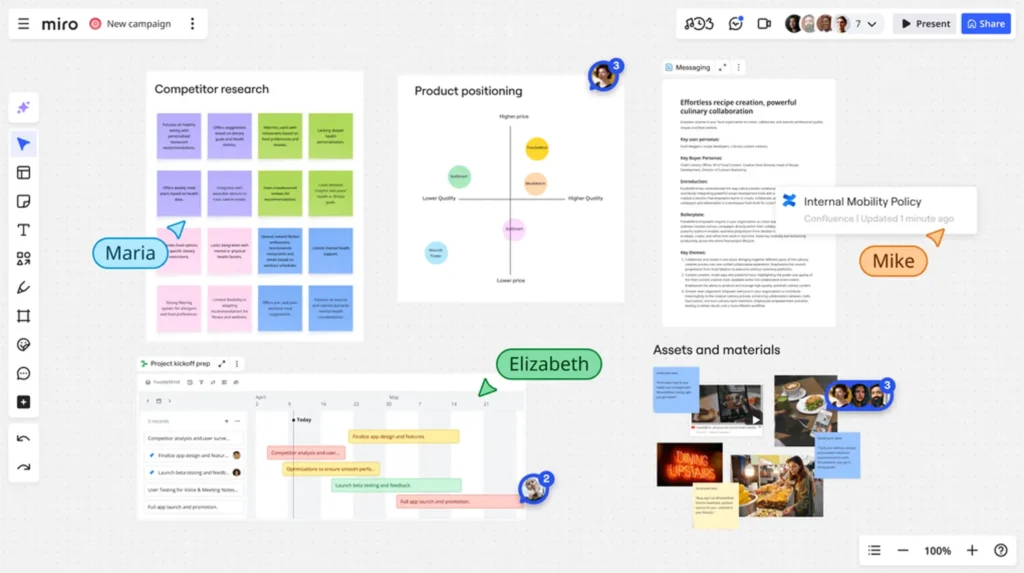
Source: Miro
You don’t need complexity, you need clarity.
When you can see how people move through your funnel, your content marketing, email marketing, and lead generation efforts become far more effective.
Mapping your buyer journey turns guesswork into insight, and that’s how you transform strangers into buyers and buyers into loyal advocates.
Digital Marketing, SEO & PPC
- SEO to boost rankings and capture high-intent, AI-driven traffic
- Performance Marketing to run ROI-focused campaigns that convert
- Content Marketing to drive clicks, earn links, and build authority

3. Marketing Audit
Before spending another pound or dollar on ads, pause and assess: what’s actually working?
A marketing audit is one of the most underrated growth tools in your toolkit.
It forces you to look at all your active channels. SEO, PPC, social media marketing, email campaigns, or even offline events, and measure their real impact.
Not all traffic is equal. Some channels bring qualified leads, others just vanity metrics.
The goal is to double down on what drives results and stop what doesn’t.
Take Uber, for example.
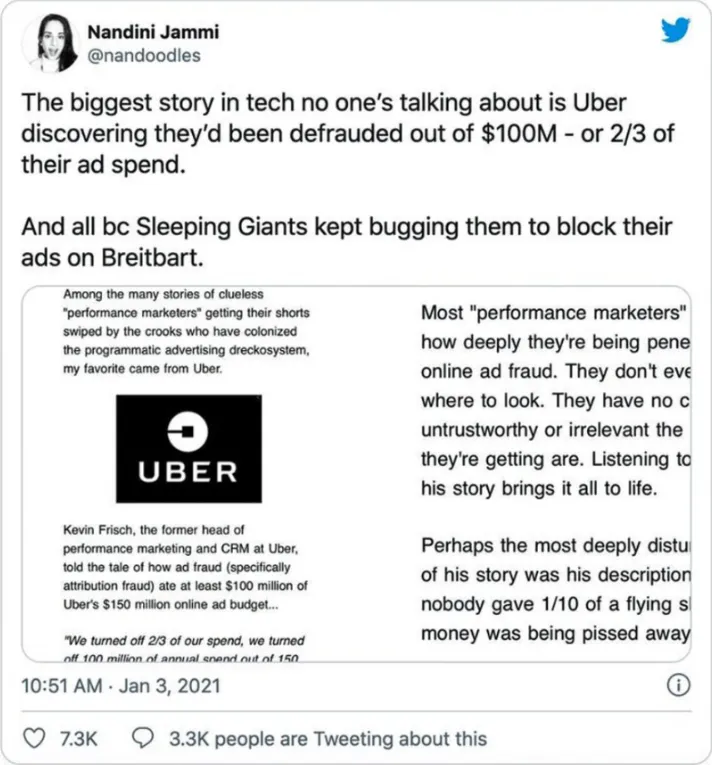
Their internal audit uncovered over $100 million wasted on inefficient digital ads, wrong placements, poor targeting, and even ad fraud.
Once they corrected it, costs dropped and conversions soared.
That’s the power of auditing your online marketing performance.
You’ll uncover where your spend leaks are, maybe it’s poor audience targeting, unclear messaging, or weak landing pages.
Fix those, and your conversion rate optimisation (CRO) instantly improves without extra budget.
At its core, marketing isn’t about spending more. It’s about exchanging real value, your offer for your customer’s trust, time, and money.
A marketing audit tells you whether that exchange is truly happening or if you’re just throwing money into the noise.
In short, audit first, optimise second, and only then scale.
That’s how smart brands turn chaos into clarity, and clarity into consistent growth.
4. Competitor & Industry Insights
Your competitors are your greatest teachers, not to copy, but to learn where the real gaps are.
Competitor and industry analysis isn’t about imitation; it’s about innovation. The goal is to see what others in your space are doing, and more importantly, what they’re not doing.
- How are they positioning their brand?
- Which platforms or offers seem to perform well for them?
- What channels or tactics are they missing — webinars, influencer collaborations, or behind-the-scenes content?
Take Netflix, for example.
While most studios focused on traditional ads and trailers, Netflix turned social media into a storytelling engine, blending memes, fan interactions, and culture.
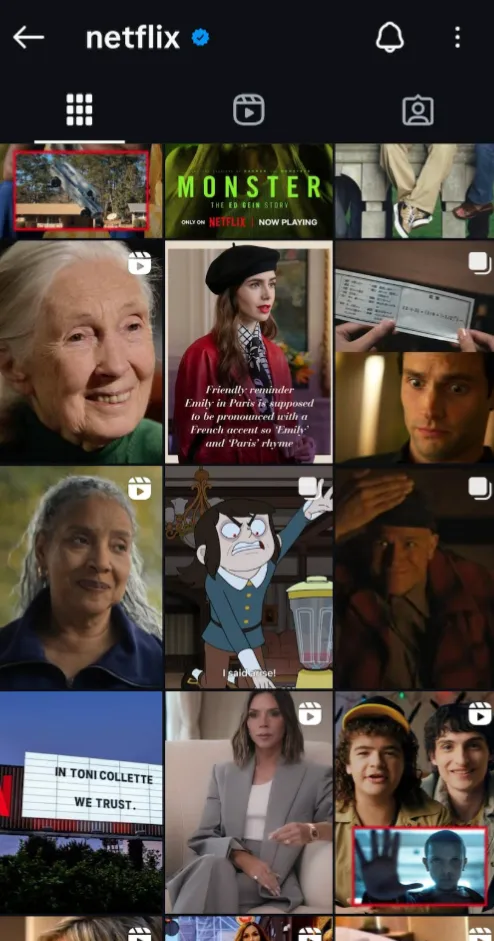
Source: Netflix Instagram Page
They didn’t just promote shows; they created conversations.
That’s the power of an insight-driven digital marketing strategy.
When you identify blind spots in your industry, you can build a marketing plan that cuts through noise and earns attention.
Maybe your competitors ignore SEO marketing, or haven’t invested in influencer partnerships.
Maybe they never built communities around their brand.
Those gaps are your opportunity — the space where your business can lead.
Competitor insights don’t just refine your tactics; they shape your brand strategy, messaging, and long-term market position.
Marketing Research & Strategy
We help you understand your market and build smart strategies to attract more customers and grow faster.
- Detailed research into your competitors, customers, and market
- Custom marketing and growth plans that drive real results
- Clear action steps to increase traffic, leads, and sales

ADWORDS ROI
Cut Ad spend

5. Channel Strategy
Once you know what your market looks like, it’s time to decide where to play.
A smart channel strategy is about focus, not volume.
You don’t need to be everywhere; you just need to be where it counts.
- Paid: Google Ads, Meta, LinkedIn, or TikTok — quick wins through targeted online advertising.
- Organic: SEO, content marketing, PR, and social — slow but powerful long-term growth.
- Owned: Email, SMS, and communities — assets you control completely.
- Partnerships: Affiliates, co-marketing, or referral programs that extend your reach.
- Paid channels are the fertiliser — they give fast results but fade quickly.
- Organic channels are the seeds — they take time but grow into something lasting.
- Owned channels are your private greenhouse — where relationships and retention thrive.
- Partnerships are trading seeds with neighbours — expanding your market without starting from scratch.
The secret? Balance quick wins with sustainable growth.
A good omnichannel marketing strategy ensures your paid campaigns feed your organic reach, your content builds SEO authority, and your owned channels nurture leads into loyal customers.
Related Read: 15 Must-Know LinkedIn Marketing Tools for Businesses in 2025
Digital Marketing, SEO & PPC
- SEO to boost rankings and capture high-intent, AI-driven traffic
- Performance Marketing to run ROI-focused campaigns that convert
- Content Marketing to drive clicks, earn links, and build authority

6. Messaging & Offers
Even the best marketing plan fails without the right message.
Your brand messaging is the bridge between your customer’s pain and their desired outcome.
If that bridge feels unclear or weak, people won’t cross it — no matter how great your product is.
- Speaks their language: Address pain points directly and show you understand their challenges.
- Shows proof: Use case studies, testimonials, or ROI guarantees to build trust.
- Guides action: Keep your calls-to-action (CTAs) consistent across ads, landing pages, and emails.
When your offers are clear and emotionally aligned with your audience’s needs, marketing stops feeling like persuasion and starts feeling like help.
Whether it’s a free demo, consultation, or limited-time deal, every offer should show transformation, not just transaction.
Your message isn’t just what you say, it’s how you make your audience feel.
And when it’s consistent across your social media marketing strategy, emails, and website, you don’t just sell — you connect, convert, and create loyal customers.
7. Funnel & Conversion Optimisation
Your marketing funnel is only as strong as its weakest link.
Ad → Landing Page → Form → Call → Close
where exactly are you losing people?
Is it impressions but no clicks?
Clicks but no conversions?
Leads but no sales?
That’s where conversion optimisation comes in. Even small improvements can create a massive impact.
If your landing page conversion jumps from 2% to 4%, you’ve literally doubled your leads overnight, without increasing your ad spend.
- Are your CTAs clear and consistent?
- Are your pages loading fast enough?
- Do you have nurture campaigns for those who don’t buy right away — like retargeting ads or email sequences?
Adding a few smart touches, trust signals, social proof, and personalised follow-ups can dramatically increase close rates.
This is where your digital marketing evolves from chasing attention to driving actual results.
Optimise every step, and your funnel becomes more than a pathway; it becomes a conversion engine.
Marketing Research & Strategy
We help you understand your market and build smart strategies to attract more customers and grow faster.
- Detailed research into your competitors, customers, and market
- Custom marketing and growth plans that drive real results
- Clear action steps to increase traffic, leads, and sales

ADWORDS ROI
Cut Ad spend

8. Content & Campaign Planning
Content is the fuel that keeps your marketing engine running.
Without a clear content marketing plan, even the best strategy loses momentum.
This is where you zoom out and design your story, how you’ll attract, educate, and convert your audience consistently.
- What type of content best delivers your message — blogs, videos, webinars, or podcasts?
- Are you planning ahead for product launches, seasonal spikes, or trends in your industry?
- Are you repurposing content effectively?
One webinar can become 10 social media clips, 1 blog, 3 email campaigns, and ad creatives — that’s called content repurposing.
It multiplies your impact without multiplying workload.
A well-structured campaign calendar brings order to chaos, ensures team coordination, and keeps your brand consistently visible.
Remember, content isn’t just traffic. It’s what builds trust, authority, and long-term growth.
Also Read: Top 10 AI Tools for Businesses to Get Ahead in 2025 (tried & tested)
9. Budget & Resources
Even the strongest marketing strategy fails without resource clarity.
- What’s your monthly marketing budget — fixed or flexible?
- What tools do you already have — HubSpot, GA4, Mailchimp, or Ads Manager
- How capable is your team of handling more leads or campaigns?
Smart budgeting isn’t about spending more — it’s about spending wisely.
Match your financial and human resources with your growth goals.
When you align your budget with your marketing channels and goals, execution becomes smoother and performance becomes measurable.
Otherwise, even a great plan stalls because there’s no capacity to deliver.
Budget clarity = execution power
Digital Marketing, SEO & PPC
- SEO to boost rankings and capture high-intent, AI-driven traffic
- Performance Marketing to run ROI-focused campaigns that convert
- Content Marketing to drive clicks, earn links, and build authority

10. Measurement & Reporting
“What gets measured, grows.”
Tracking performance is where most businesses fall short.
They run campaigns but don’t review what’s actually driving revenue.
Define your key metrics early — ROI, CAC, CLTV, ROAS, or brand lift — and stick to them.
Set reporting cycles (weekly, monthly, or quarterly) and assign responsibility — whether that’s your in-house team or your marketing agency.
A clear measurement framework ensures accountability, data-driven decisions, and ongoing optimisation.
It also tells you which campaigns deserve more budget, and which ones should stop.
Reporting isn’t just about numbers; it’s about insight.
When you track, test, and tweak regularly, your marketing becomes smarter, faster, and far more profitable.
Key Takeaways
- Align business and marketing goals before spending a penny.
- Know your audience and map their buyer journey.
- Audit what’s working — and stop what’s not.
- Study competitors to find your advantage.
- Focus on the right mix of paid, organic, and owned channels.
- Craft clear, customer-focused messaging.
- Fix funnel leaks to double conversions.
- Plan content with purpose — and repurpose smartly.
- Spend strategically, not emotionally.
- Measure what matters — ROI, CAC, CLTV, not vanity metrics.
Get the Free Discovery Workbook + Book a Strategy Call
If you’re ready to stop guessing and start scaling, the next step is simple.
We’ve created a Free Discovery Workbook that walks you through the same framework we use to help clients double ROI, generate consistent B2B leads, and grow sustainably online.
- Step-by-step exercises to align business and marketing goals
- Templates for mapping your buyer journey and funnel
- Proven methods to identify the right channels for your business
- Checklists for conversion optimisation and campaign tracking

Download the Free Discovery Workbook and apply what you’ve learned today.
And if you’re serious about scaling faster, let’s make it personal.
Book a Free 1:1 Discovery Call with our team at Credofy.
We’ll review your business, uncover growth gaps, and show you how to turn your marketing into a predictable growth engine.
Book Your Free Discovery Call — limited spots available each month.
FAQs
What is Marketing Discovery in business growth?
Marketing Discovery is the process of aligning your business goals with the right digital marketing strategy. It covers your audience, brand positioning, marketing channels, content, offers, and analytics to ensure every action drives measurable growth.
How do I choose the best marketing channels for my business?
Start with your audience.
- B2B marketing? Focus on LinkedIn, webinars, and SEO content.
- B2C marketing? Prioritise social media marketing — Instagram, YouTube, and TikTok.
Local business? Use Google Business Profile and maps-based SEO.
Test small, track performance, and scale what converts best.
How can small businesses reduce wasted ad spend?
Run a marketing audit to identify underperforming channels. Track ROI, CAC, and conversion rates. Cut campaigns that only drive vanity metrics and double down on what delivers qualified leads. Tools like Google Analytics, HubSpot, or Ads Manager make this easy to monitor.
What’s the difference between a marketing strategy and marketing tactics?
Your marketing strategy is the long-term plan — audience targeting, channel selection, and messaging. Tactics are the short-term actions — running PPC ads, creating content, or posting on social media. Without a strategy, tactics are random. Strategy turns them into a growth system.
How do I know if my sales funnel is leaking leads?
Audit your conversion stages:
- Ad impressions but low clicks? Fix targeting or messaging.
- Clicks but no conversions? Optimise your landing page.
- Leads but no sales? Improve follow-up, retargeting, or offer clarity.
Tracking your funnel data regularly helps identify where prospects drop off — and where to focus optimisation.
What is the most effective digital marketing strategy for small businesses?
Start with a mix of SEO marketing, content marketing, and paid social media advertising. This helps you build visibility, capture leads, and grow sustainably without needing huge budgets.
What is the difference between inbound and outbound marketing?
Inbound marketing attracts customers through value-based content (blogs, SEO, email, social), while outbound marketing pushes messages through ads, cold outreach, or calls. Combining both creates a balanced lead generation strategy.
How do I measure the success of my digital marketing campaigns?
Track metrics that matter, ROI, CAC, CLTV, ROAS, and conversion rates. Use tools like Google Analytics, HubSpot, or SEMrush to monitor performance across channels and make data-driven decisions.
What is PPC marketing and how does it work?
Pay-per-click (PPC) marketing lets you advertise on platforms like Google or Facebook, paying only when someone clicks your ad. It’s ideal for generating immediate traffic and high-intent leads while testing messaging or offers.
How can I generate more B2B leads online?
Use LinkedIn marketing, targeted email campaigns, and SEO content tailored to your industry. Offer value-based resources like eBooks or webinars to capture qualified B2B leads consistently.
Why is social media marketing important for businesses?
Social media boosts visibility, builds community, and drives engagement. It helps brands connect directly with customers, showcase expertise, and support both B2C and B2B marketing goals through consistent storytelling.
How can I create a strong brand strategy online?
Define your value proposition, identify your target audience, and craft messaging that reflects your mission and values. Consistency across visuals, tone, and customer experience builds long-term brand trust.
What are the 7Ps of marketing?
The 7Ps of marketing — Product, Price, Place, Promotion, People, Process, and Physical Evidence — form the foundation of every marketing plan. They help balance strategy, communication, and delivery effectively.
What is an omnichannel marketing strategy?
Omnichannel marketing creates a seamless experience across all touchpoints — website, email, social media, and ads — ensuring customers can interact with your brand consistently wherever they are.




